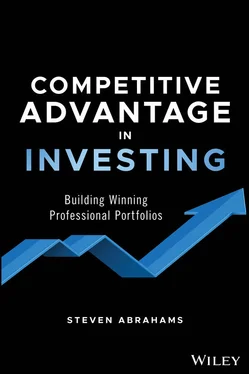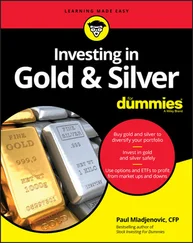Or imagine that you are sitting at a bank or insurance company or mutual fund. Or a hedge fund or some other place that invests professionally. In front of you is a number with the cash you have to invest. You have work to do.
You start penciling out a list. It's short at first. Maybe you think about putting the money in a drawer just because it's convenient. Perhaps you think about putting the money in a bank. Or you think about making a loan to someone or some company somewhere in the world. You think about investing as an owner of a business or several businesses. You imagine a budding international empire of businesses. The list has only started.
You could buy a bond from a government or from a company somewhere in the world. You could buy stock. You could buy an option, where someone takes a payment today and agrees to either buy or sell something at a certain price in the future. You could buy insurance or a contract that works like insurance, where someone takes a payment today and agrees to cover losses or damage in the future. You could buy gold or silver, wheat or orange juice, oil or other commodities. You could buy an apartment or an apartment building, an office building, or other commercial property. That's a lot to consider, but the list goes on.
You could buy shares in funds managed by professional investors—even if you are a professional investor yourself. The fund would invest on your behalf in any or all of the available markets. You could buy shares in funds that make loans, buy and sell private companies, buy and sell bonds or equity, own options or commodities or real estate, or any combination of these and other things. You could own funds that trade their investments all the time or almost never. The list continues.
It you printed this list out and watched the pages tick off of the printer and slide onto the floor, it would likely run longer than the longest list you have ever seen. It would fill up the room, spill into the hallway, out the front door, and down the street. It would keep going from there. You could follow it to the ocean and watch it start to fill up the deepest parts. The list would literally be endless.
Now that you have this infinite list, choose. Build your portfolio.
The challenge of investing becomes a challenge of choice and choosing wisely.
If you avoid the temptation to put the infinite list aside and do nothing, you may start to notice something common to all of these investments. Something that unifies them. Something that simplifies them. Something that enables you to compare each item on your infinite list to every other.
Start with the money in the drawer. You put the money there, and time passes. One day, you open the drawer and take the money out. You spend it.
Consider another simple investment: depositing money in a bank. You put the money in the bank, and time passes. The bank pays interest on your deposit. One day, you take the deposit and the interest out of the bank. You spend it.
Now consider another investment: a loan. You give the borrower cash. The borrower makes interest payments on a certain schedule and then returns the cash. The investment ends. You spend it.
Consider a related investment: a bond. You buy a bond with cash. The cash goes to a government or company. The government or company pays interest on a certain schedule and then repays the cash. The investment ends.
Consider buying a company or making an investment in common stock or some other form of ownership. The investor buys the stock or the ownership stake with cash. The company uses the cash to operate its business, taking in revenues and paying expenses. Whatever is left over after expenses either gets reinvested in the business or returned to investors as a dividend. The investor never gets back the original cash, although the investor can sell the stock or the ownership stake to another buyer.
Then consider options, insurance, commodities, real estate, and funds. It's a couple of lifetimes' worth of considering.
One thing unifies all of these investments: cash flow. All investing in all of its various forms starts and ends with cash flowing in and cash flowing out of an investment. The world has endless notes, articles, books, and guides to the particular ways that cash flows in and out of different kinds of investments. The investments may seem very different, but underneath the complexities and nuances of different investments is the flow of cash or value into and out of an investment over time. Look through the different names and details to the cash flow. Cash flow is investing stripped to its essentials. Cash flow is all that matters.
Different forms of investment simply entitle investors to different cash flows. The money in the drawer only generates cash in and cash out. A bank deposit generates cash and interest. A loan or bond typically gets principal and interest. Equity gets whatever cash flow is left after a business pays expenses. An option gets the chance to buy debt or equity or something else at some future date. Premiums paid for insurance get the right to recover future damages or losses.
Even when investment advice never mentions cash flow—when it focuses on buying low and selling high, or timing or not timing the market, or momentum or value investing, or the like—it still involves putting something of value in and taking something of value out. If that's not the case, then it's not an investment. It's the purchase of goods or services. Or it's a donation.
All Cash Flow Includes Risk
Both before Harry Markowitz and since, investment theory and practice has followed the thread of cash flow that runs through every item on the infinite list and has woven a broad fabric. Different investments generate cash flow over different time lines. Cash flow can come tomorrow, the next day, or years later. The frequency or circumstances of future cash flow can be easy or hard to predict. Value invested today produces expected value tomorrow. Reasonable people will disagree about the timing or magnitude of return, but the value of any investment ultimately ties back to cash in and cash out.
Think again about the list of investments. The cash in the drawer is there whenever you need it. The bank deposit is usually there, too, whenever you need it. An investor in a loan or bond usually has to wait to get interest and to have principal returned. The cash flow from a stock or other form of ownership depends on the operations of the business.
The timing of cash flows matters. Cash may not be able to buy as much in the future as it can today, so future cash may not be worth as much as cash in the pocket today. The cash in the drawer may be safe, but it may not be able to buy a loaf of bread, a dozen eggs, and a carton of milk at the same price tomorrow. For professional investors at banks or insurers or other funds, cash in a drawer may not be enough to meet future obligations to customers or partners. If prices go up, that is, if there's inflation, then the money in the drawer loses value. Or for professional investors, if customers' or partners' need for return rises, cash in a drawer may not be enough. Timing of cash flow matters because the longer it takes to get the cash, the greater the possibility that the cash loses buying power or falls short of investment expectations. In that case, time truly is money.
Timing matters, too, because borrowers compete for cash over different horizons. Borrowers offer to pay different interest rates over different horizons. The supply and demand for cash leads to a clearing rate at each horizon, often called the real rate of interest .
Cash flow also may not be certain. The borrower disappears or has a run of bad luck and cannot repay. Banks fail. The bond issuer fails. The company falls on hard times. Earnings rise and fall. Laws and regulations change. Taxes go up and down.
Читать дальше












